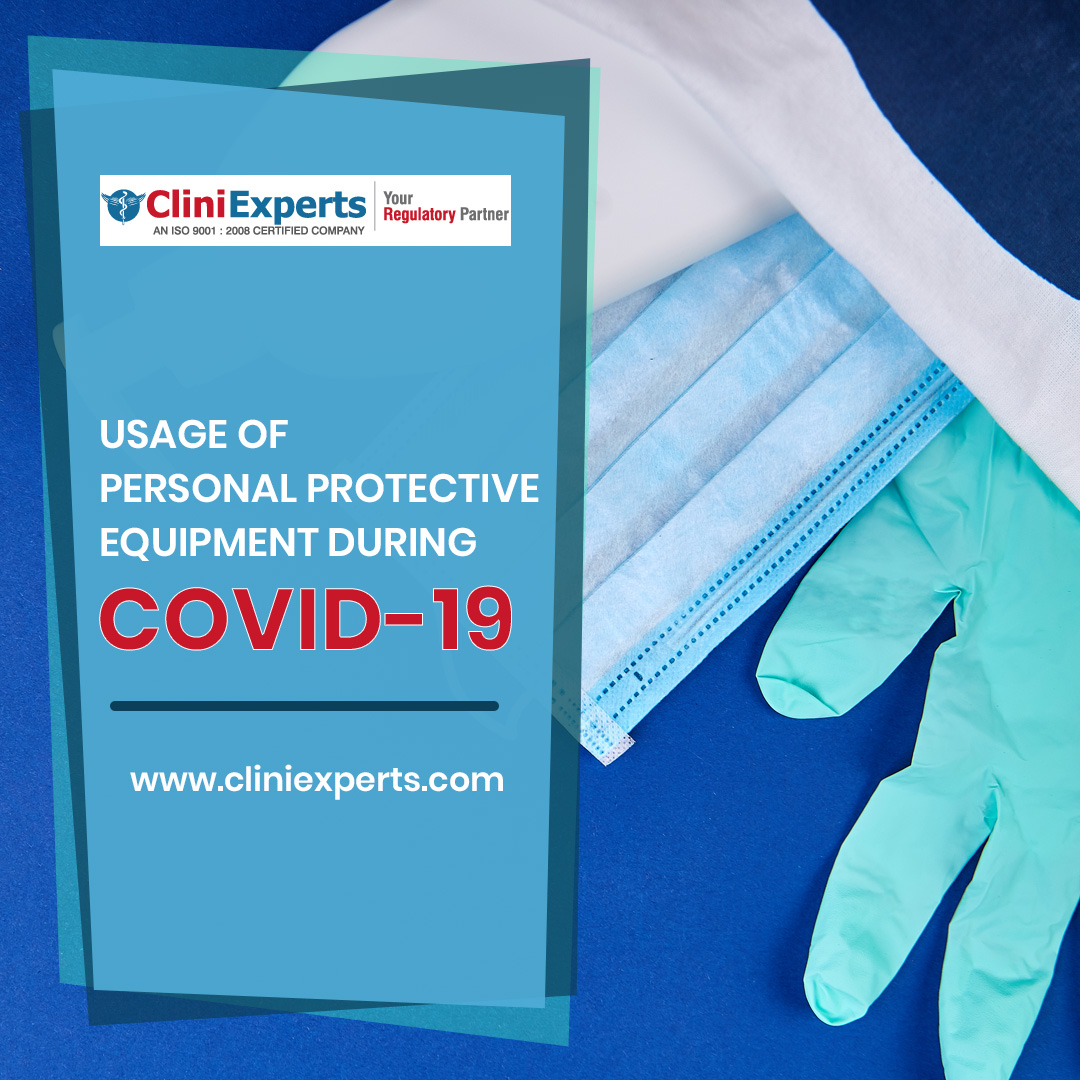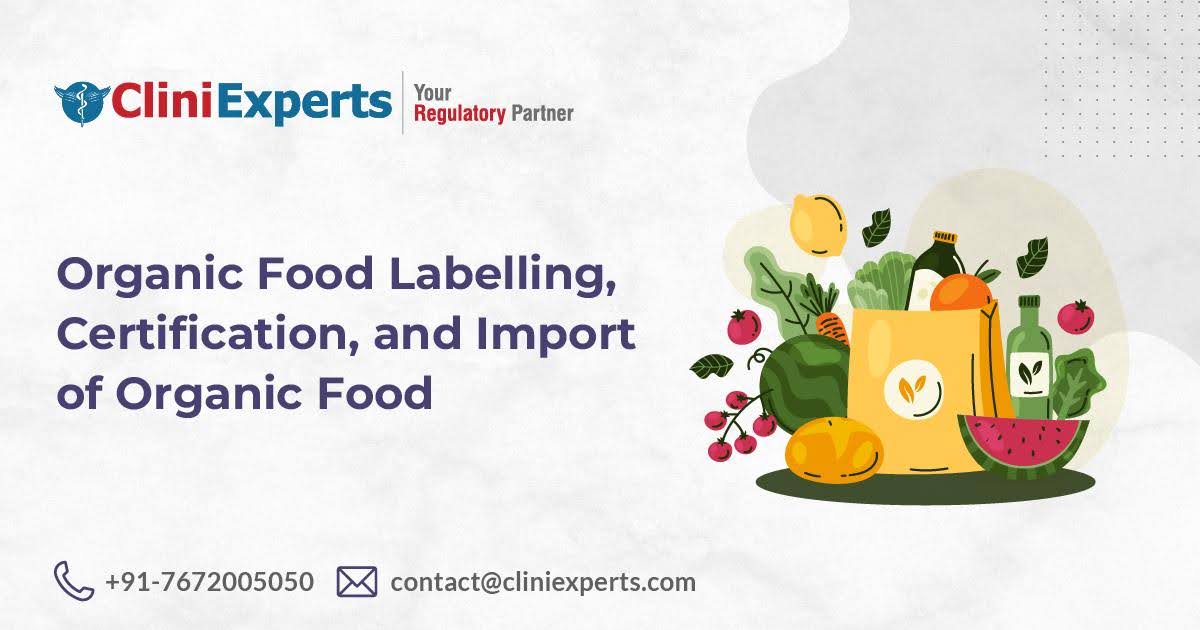Usage of Personal Protective Equipment Rationally During COVID-19 Pandemic

The World Health Organization (WHO) has declared the recent infections of COVID-19 as pandemic. As COVID-19 cases are rising in India, frontline healthcare workers are facing a shortage of Personal Protective Equipment (PPE), viz. face masks and shields, gloves and gowns, which has led to a situation of panic. The Ministry of Health and Family Welfare (MOHFW) released guidelines on the rational use of PPEs for health care professionals to be followed all over the country. This is applicable for points of entries (POEs), quarantine centers, healthcare facilities like hospitals, laboratories, and primary health care / community settings.
COVID-19: An Introduction
Coronavirus disease 2019 (COVID-19) is a viral infectious disease caused by severe acute respiratory syndrome coronavirus 2 (SARS-CoV-2). The outbreak of COVID-19 was initially identified from a seafood market in Wuhan city in Hubei Province of China in mid-December, 2019. Presently it has spread to more than 185 countries/territories worldwide.
Transmission of COVID-19 virus
- There is clear evidence of human-to-human transmission of SARS-CoV-2. Primary transmission between people through respiratory droplets and contact routes.
- Direct contact with infected people can transmit SARS-CoV-2. Even indirect contact with surfaces in the immediate environment or with objects used on the infected person (e.g., stethoscope or thermometer)
- There is limited evidence to support airborne transmission of SARS-CoV-2 till date.
- Healthcare workers across the world are getting infected by the SARS-CoV-2 virus, including India.
- The people most at risk of COVID-19 infection are those who are in close contact with a suspect/confirmed COVID-19 patient or who care for such patients.
Personal protective equipment (PPE)
PPE refers to protective gears designed to protect the wearer from injury or contracting infection or illness by minimizing the exposure to a biological agent.
Components of PPE and Rationale use
Face shield and goggles
The protection of the mucous membranes of the eyes/nose/mouth by using face shields/ goggles is an important part of standard and contact precautions. The flexible frame of goggles must provide a good seal with the skin of the face, covering the eyes and the nearby areas and also provide space for prescription glasses.
Masks
Protecting the airway from the particulate matter generated by droplets / aerosols prevents human infection related to respiratory viruses like COVID-19. The virus enters the host through mucous membranes of the mouth and nose by infective droplets or through a contaminated hand. Hence the droplet precautions/airborne precautions using masks are crucial while dealing with a suspected or confirmed case of COVID-19/performing aerosol-generating procedures. Masks are of different types. The type of mask to be used is related to the particular risk profile of the category of personnel and his/her work. There are two types of masks which are recommended for various categories of personnel working in hospital or community settings, depending upon the work environment.
a) Triple-layer medical mask
A triple layer medical mask is a disposable mask, fluid-resistant, provides protection to the wearer from droplets of infectious material emitted during coughing/sneezing/talking.
b) N-95 Respirator mask
An N-95 respirator mask is a respiratory protective device with high filtration efficiency to airborne particles. To provide the requisite air seal to the wearer, such masks are designed to achieve a very close facial fit.
Such masks should have high fluid resistance, good breathability (preferably with an expiratory valve), clearly identifiable internal and external faces, duckbill/cup-shaped structured design that does not collapse against the mouth.
If worn correctly, the filtration capacity of these masks exceeds those of triple-layer medical masks. Since these provide a much tighter air seal than triple-layer medical masks, they are designed to protect the wearer from inhaling airborne particles.
-
Gloves
If a person touches an object/surface contaminated by COVID-19 infected person, and then touches his own eyes, nose, or mouth, he may get infected with the virus. Care should be exercised while handling objects/surfaces potentially contaminated by suspect/confirmed cases of COVID-19.
While using gloves, Nitrile gloves are preferred over latex gloves in the highly infectious pandemic. Moreover, they resist chemicals, including certain disinfectants such as chlorine. There is a high rate of allergies to latex and contact allergic dermatitis among health workers. However, if nitrile gloves are not available, latex gloves can be used. Nonpowdered gloves are preferred to powdered gloves
Coverall/Gowns
Coverall/gowns are generally designed to protect the torso of healthcare providers from exposure to the virus. Typically coveralls provide overall protection as they are made to cover the whole body, including back and lower legs and sometimes head and feet as well, the design of medical/isolation gowns do not provide continuous whole-body protection (e.g., possible openings in the back, coverage to the mid-calf only). It is possible to eliminate or reduce contact and droplet exposure of COVID-19 by protecting healthcare workers working very close (within 1 meter) of suspect/confirmed COVID-19 cases or their secretions by wearing appropriate clothing
There is no comparative evidence between coveralls and gowns in reducing the transmission of biological agents and are equally acceptable. Coveralls/gowns have specific and stringent standards that prevent exposure to biologically contaminated solid particles and also protecting from chemical hazards.
Shoe covers
Shoe covers are used over shoes and are made up of impermeable fabric for personal protection and decontamination.
Head covers
Coveralls generally cover the head. Head covers are for those using gowns, while providing treatment for patients. Hair and hair extensions must fit inside the head cover.
Rationale of Use of PPE
According to the guidelines, the PPEs are recommended based on the risk profile of the health
care worker.
| S. No. | Areas | Activity | Risk | PPERecommended | Remarks |
| 1. | Health Desk | Provideinformation totravelers | Low risk | Triple layermedical maskGloves | Minimumdistance of onemeter needs tobe maintained |
| 2. | Immigration counters,customs and airportsecurity | Provideservices to thepassengers | Low risk | Triple layermedical maskGloves | Minimumdistance of onemeter needs tobe maintained |
| 3. | Temperature recordingstation | RecordTemperaturewith hand heldthermalrecorder | Low risk | Triple layermedical maskGloves | |
| 4. | Holding area/ Isolationfacility of APHO/ PHO | Interview &Clinicalexamination bydoctors/ nurses | ModerateRisk | N-95 masksGloves | |
| 5. | Isolation facility of APHO | Interview &Clinicalexamination bydoctors/ nurses | ModerateRisk | N-95 masksGloves | |
| Attending to severely ill passenger | High risk | Full complement of PPE | When aerosol generating procedures are anticipated | ||
| 6. | Sanitary staff | Cleaning frequently touched surfaces/ Floor/ cleaning linen | No risk | N-95 maskGloves | |
| 7. | Administrative staff | Providing administrative support | No risk | No PPE | No contact with patients of COVID19. They should not venture into areas where suspect COVID-19 cases are being managed. |
Hospitals
Out Patient Department (Respiratory Clinic / Separate screening area)
Hospitals all over the country should create a separate triage and holding area for patients with symptoms of influenza. If there is no space for triage area / holding area for patients, such hospitals need to follow the guidance for general OPD.
| S. No. | Areas | Activity | Risk | PPERecommended | Remarks |
| 1. | Triage area | Triaging patientsProvide triple layer mask to patient | Moderate risk | N 95 maskGloves | Patients get masked |
| 2. | Screening area help desk/ Registration counter | Provide information to patients | Moderate risk | N-95 maskGloves | |
| 3. | Temperature recording station | Record temperature with hand held thermal recorder | Low risk | Triple layermedical maskGloves | |
| 4. | Holding area/ waiting area | Nurses / paramedic interacting with patients | Moderate Risk | N 95 maskGloves | Minimum distance of one meter needs to be maintained. |
| 5. | Doctors chamber | Clinical management (doctors, nurses) | ModerateRisk | N-95 masksGloves | No aerosol generating procedures should be allowed |
| 6. | Sanitary staf f | Cleaning frequently touched surfaces/ Floor/ cleaning linen | Moderate risk | N-95 maskGloves | |
| 7. | Visitors accompanying young children and elderlies | Support in navigating various service areas | Low risk | Triple layer medical mask | No other visitors should be allowed to accompany patients in OPD settings. The visitors thus allowed should practice hand hygiene |
| S. No. | Areas | Activity | Risk | PPERecommended | Remarks |
| 1. | Individual isolation rooms/ cohorted isolation rooms | Clinical management | Moderate risk | N 95 maskGloves | Patients masked. Patients stable. No aerosol generating activity |
| 2. | ICU/ Critical Critical care | High risk | Full complement of PPE | Aerosol generating | |
| 3. | ICU/ Critical Critical care | Dead body packing | High risk | Full complement of PPE | |
| 4. | ICU/ Critical Critical care | Dead body transport to mortuary | Low risk | Triple Layer medical mask | |
| 5. | Sanitation | Cleaning frequently touched surfaces/ floor/ changing linen | ModerateRisk | N-95 mask Gloves | |
| 6. | Other NonCOVID treatment areas of hospital | Attending to infectious and non-infectious patients No possibility of exposure to COVID patients. They should not venture into COVID-19 treatment areas. | Risk as per assessed profile of patients | PPE as per hospital infection prevention control practices. | No possibility of exposure to COVID patients. They should not venture into COVID-19 treatment areas. |
| 7. | Caretaker accompanying the admitted patient | Taking care of the admitted patient | Low risk | Triple layer medical mask | The caretaker thus allowed should practice hand hygiene, maintain a distance of 1 meter |
| S. No. | Areas | Activity | Risk | PPERecommended | Remarks |
| 1. | Emergency | Attending emergency cases | Moderate risk | N 95 maskGloves | When aerosol generating procedures are anticipated |
| Attending to severely ill patients of SARI | High risk | Full complement of PPE | Aerosol generating proceduresperformed. |
| S. No. | Areas | Activity | Risk | PPERecommended | Remarks |
| 1. | Ambulance Transfer to various designated hospital | Transportation of patients not on any assisted ventilation | Moderate risk | N 95 maskGloves | When aerosol generating procedures are anticipated |
| Management of SARI patient while transporting | High risk | Full complement of PPE | |||
| Driving the ambulance | Low risk | Triple layer medical mask Gloves |
| S. No. | Areas | Activity | Risk | PPERecommended | Remarks |
| 1. | Laboratory | Sample collection and transportation | High risk | Full complement of PPE | When aerosol generating procedures are anticipated |
| Sample testing | High risk | Full complement of PPE | |||
| 2. | Mortuary | Dead body handling | Moderate Risk | N 95 mask Gloves | No aerosol generating procedures should be allowed. No embalming. |
| While performing autopsy | High Risk | Full complement of PPE | No post-mortem unless until specified | ||
| 3. | Sanitation | Cleaning frequently touched surfaces/ Floor/ cleaning linen in COVID treatment areas | Moderate risk | N-95 mask Gloves | |
| 4. | CSSD/Laun dry | Handling linen of COVID patients | Moderate risk | N-95 mask Gloves | |
| 5. | Other supportive services Administrative | Administrative, Financial Engineering Security, etc. | No risk | No PPE | No possibility of exposure to COVID patients. They should not venture into COVID-19 treatment areas. |
Healthcare Workers in Community Setting
| S. No. | Areas | Activity | Risk | PPERecommended | Remarks |
| 1. | ASHAs/ Anganwadi and other field staff | Field Surveillance | Low Risk | Triple layer mask Gloves | Maintain distance of one meter. Surveillance team to carry adequate triple layer masks to distribute to suspect cases detected on field surveillance |
| 2. | Doctors at supervisory level conducting field investigation | Field surveillance Clinical examination. | Medium risk | N 95 mask Gloves |
Quarantine Facility
| S. No. | Areas | Activity | Risk | PPERecommended | Remarks |
| 1. | Persons being quarantined | Low Risk | Triple layer mask | surveillance | |
| 2. | Healthcare staff working at quarantine facility Health | Health monitoring and temperature recording | Low Risk | Triple layer mask Gloves | |
| Clinical examination of symptomatic persons | Moderate Risk | N-95 masks Gloves | |||
| 3. | Support staff | Low Risk | Triple layer mask Gloves |
Home Quarantine
| S. No. | Areas | Activity | Risk | PPERecommended | Remarks |
| 1. | Persons being quarantined | Low Risk | Triple layer mask | ||
| 2. | Designated family member | Taking care of person being quarantined | Low Risk | Gloves | While cleaning commonly touched surfaces or handling soiled linen |
| 3. | Other family | No Risk | No PPE required | Maintain a distance of at least 1 meter from person under home quarantine. Senior citizens in the household should stay away from such persons under home quarantine. |
Key Points to keep in mind while using PPE
- The most important thing is PPEs are not an alternative to basic preventive public health measures such as hand hygiene, respiratory hygiene, and behavior, which need to be followed at all times.
- Always keep a distance of at least 1 meter from contacts/suspect/confirmed COVID-19 cases.
- Follow the protocol for disposing off PPEs in infection prevention and control guidelines available on the website of MoHFW.
Reference:
-
Guidelines on rational use of Personal Protective Equipment.pdf. Available at: https://www.mohfw.gov.in/pdf/GuidelinesonrationaluseofPersonalProtectiveEquipment.pdf. A ccessed on April 06, 2020.
Recent Posts
Standards, Accreditation and Validity of FSSAI-Recognised Food Testing Laboratories

Short Description FSSAI strengthens food safety in India by accrediting laboratories through NABL, enforcing Good Laboratory Practices, addressing operational challenges, and promoting global st..
Organic Food Labelling In India| Certification, and Import of Organic Food in India

This Article is All About Organic Food Labelling In India and Certification, and Import of Organic Food in India. Explained in Detail About What is Organic Food labelling? Summary Short Description Wi..
Cosmetic Label Compliance India : A Guide to Compliance

Introduction Looking for Cosmetic Label Compliance India? Are you a cosmetic manufacturer or importer navigating the complex world of Indian regulations? Ensuring your product labels comply with the l..
HAVE A QUERY?
REACH US!Office
New Delhi
Unit No. 324 & 325, City Centre Mall, Plot No. 5, Sector 12, Dwarka, India - 110075
+917672005050
Bengaluru
RMZ Galleria, 1st floor, Ambedkar Colony, Yelahanka, Bengaluru, Karnataka, India – 560064
Call us on
Sales: +91 7672005050
Reception: +91-11-45214546
Timings
9 am to 6 pm (Monday to Friday)


